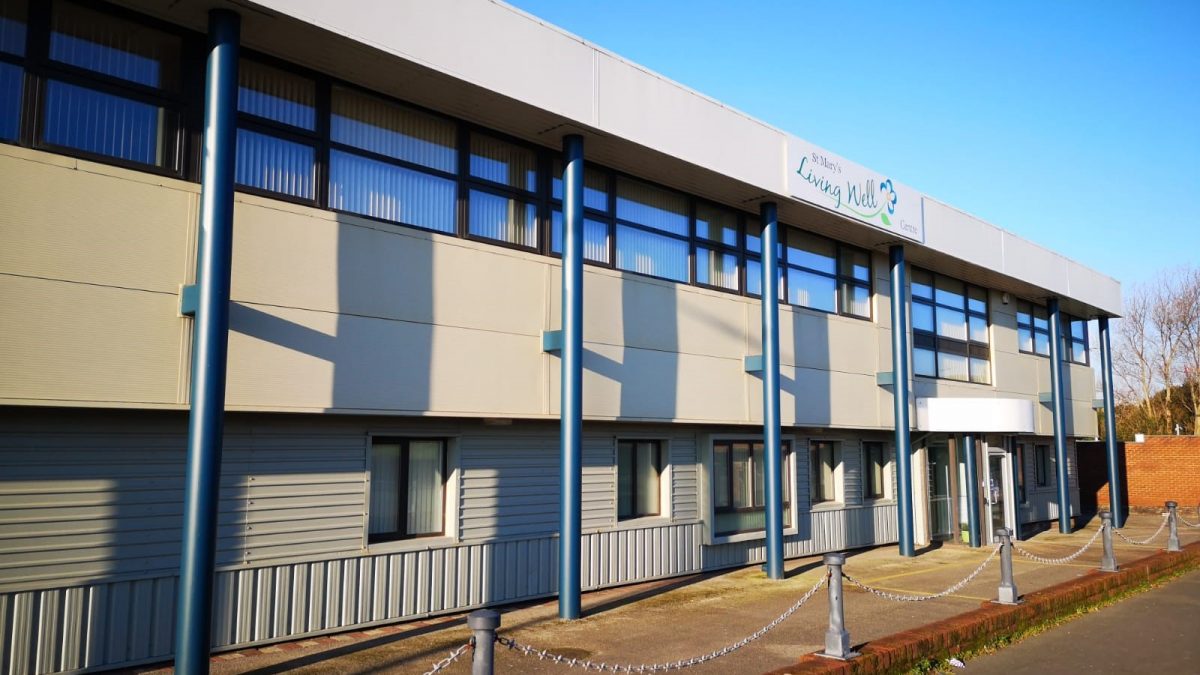St Mary’s Hospice serves part of South Lakeland and all of the Furness Peninsula with the hospice situated in Ulverston 11 miles away from the area’s largest local conurbation in Barrow. At the Trustee Away Day in 2016 Trustees agreed as priority the finding of a way to deliver more care into Barrow for the following reasons:
• Using the 1% GSF model fewer than 60% of those dying each year used the hospice
• 61% of people in Barrow over 65 have a disability
• In this town death comes on average 10 years earlier than surrounding towns
• Barrow has wards in the worst 10% nationally for health and fiscal deprivation
• Despite all of this the community energetically supports the hospice
It was the work of the Trustee Board from this point to the end of the 2019 that led to the winning of the Charity Governance Awards 2020 for Increasing Impact (for organisations with over 26 employees).
This included:
- Early work to find and refurbish a suitable building. Much sooner than expected we found a building big enough to accommodate both our growing Furniture Warehouse and separate care services
- Trustees recognised quickly that the hospice couldn’t afford to fund new services alone and so initiated an innovative partnership approach that was energetically embraced by local groups. This meant the hospice underwriting some core costs to enable smaller organisations to work alongside us delivering care jointly to a broad group of individuals and conditions
- Trustees underpinned this new model by putting in place a multi organisation Steering Group to lead the work
By the time the building opened in November 2018 we had already engaged partners who either worked with client groups already using hospice services or whose clients were likely to benefit from a rehabilitative palliative approach, or partners such as Adult Education who had resources to offer. Partners initially included groups supporting people with lung disorders, neurological conditions, stroke, dementia and family carers for people with these conditions. Hospice services were also delivered on site including Bereavement, Complementary Therapy and Living Well Services.
While initially partners’ services ran independently side by side a second phase saw us start to narrow the gaps between us. Firstly several partners combined to deliver a regular multi-agency Dementia Hub. Next a hospice volunteer kindly started a singing group open to anyone who wanted to attend. A trial was made of Adult Education classes but attendees found the paperwork onerous so these ceased. Further extensions to the way of working began when members of a bereavement craft group continued to meet informally after the end of their supported course and when hospice volunteer support enabled the Stroke Association group to begin to meet fortnightly rather than monthly. We were reaping the benefits of collective strength and by the end of 12 months had a monthly footfall of more than 300 people.
Formal feedback identified that those using the building felt the fresh, clean building was a real community asset which by offering a higher level of accessibility than other local organisations enabled more people to be involved. Users told us the increased social opportunities added to the pleasure in their lives and gave them emotional and practical support in living with their illnesses. The comment below exemplified exactly the outcome partners had wanted from this project
‘When I was in very low moods at home all day every day I was starting to have fallouts with my husband & didn’t feel like cooking or eating, just sat watching TV or generally lounging around. But coming here has given me a purpose & in the future I hope to be doing more, i.e. volunteering in groups or something.’
Christmas 2019 was celebrated with a party attended by 50 of those attending various services in the building with the requisite party hats, too much food, school children and carols. The warm end to a fantastic first year. Charging ahead into year two the hospice Living Well Team showed the importance of the building to hospice strategy by moving their offices into the building, taking full ownership of it. Each member of the team was made a point of liaison for at least one partner organisations to strengthen relationships and cross referral.
Sadly at that point Coronavirus intervened. A week before national lockdown commenced all face to face services from the building were closed down due to the vulnerability of service users. For the next month partners continued to support us in delivering donated food, prescription medicine and telephone emotional support into the wider community of those self-isolating. At the end of this period responsibility for this work was handed to the local borough council to allow our staff to return to support clinical services. For the time being the building was closed up.
We are proud of the way this partnership pulled together a variety of groups and brought support to more than 300 people a month in just over a year. Recognition of the innovative partnership working came in 2019 through the E3 Business Award Charity of the Year Award and the Hospice UK Innovation in Partnership Working Award. We were delighted to make it a hat trick in early 2020 by winning the Charity Governance Award. The growing atmosphere of welcome and support was only likely to develop with the team moving in and taking complete ownership of the project. IT’s left us all wanting more. What will the new world post COVID hold in store for the Living Well Centre? Only time will tell. But we’re betting there will be partnership in it.

